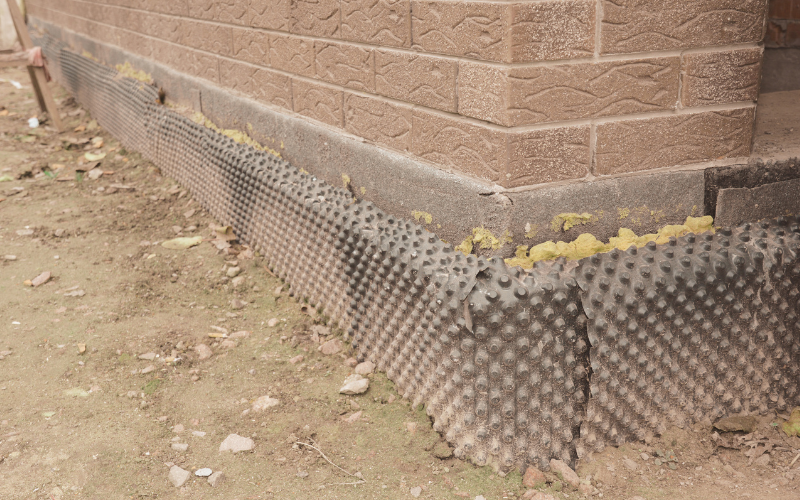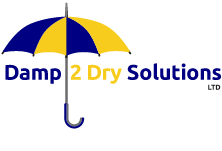
If you’re a homeowner in the UK, you’re probably well aware of how temperamental the weather can be. From torrential downpours to that persistent British drizzle, our climate puts our homes under constant pressure, especially when it comes to moisture and dampness.
One area particularly prone to these issues is the basement. So, if you’re thinking about making sure your basement stays dry and functional, you’ll need to consider the best waterproofing system for your home. But with so many options out there, how do you choose the right one? Let’s dive into the details.
Why Basement Waterproofing is Crucial for UK Homes
First things first: why should you care about basement waterproofing? Well, in a country as wet as ours, it’s essential. A damp or flooded basement isn’t just an inconvenience; it can lead to a host of problems, including:
- Structural damage: Water can weaken your home’s foundation.
- Mould and mildew: These can cause health issues and unpleasant smells.
- Damage to possessions: Whether it’s stored furniture, electronics, or family heirlooms, moisture can ruin your stuff.
- Reduced property value: A damp basement can be a dealbreaker for potential buyers.
Key Considerations for Choosing the Right Waterproofing System
When it comes to choosing a waterproofing system, it’s not a one-size-fits-all solution. There are a few things you need to consider to ensure you pick the best option for your home.
- Your Basement’s Condition: Is it already damp or prone to flooding? The current state of your basement will influence the type of system you need.
- Climate: The UK’s climate, with its heavy rainfall and high water table in certain areas, demands robust waterproofing solutions.
- Budget: Waterproofing systems can range from relatively affordable to quite expensive. Know what you’re willing to spend.
- Intended Use of the Basement: If you’re planning to convert your basement into a living space, you’ll need a more comprehensive waterproofing system compared to a basement used for storage.
Also Read: Damp Proofing vs Waterproofing: What’s the Difference?
Complying with BS8102: The Gold Standard for Basement Waterproofing
If you’re serious about waterproofing your basement, you need to be aware of BS8102. This British Standard outlines the code of practice for protection against water in below-ground structures. It’s the bible for ensuring your waterproofing system is up to scratch.
What is BS8102?: It’s a set of guidelines to ensure that any waterproofing system installed below ground is fit for purpose, keeping your basement dry and habitable.
Why It’s Important: Adhering to BS8102 ensures that your waterproofing system is both effective and compliant with building regulations. It’s especially crucial if you’re converting your basement into a living area.
How to Comply: Work with a professional who understands the BS8102 guidelines and can implement a system that meets these standards. This might involve a combination of different waterproofing types (more on that later).
Exploring Different Types of Basement Waterproofing

When it comes to waterproofing your basement, there are three main types to consider. Each has its pros and cons, and the best one for your home will depend on your specific needs.
Type A – Tanking/Barrier Protection
Tanking, also known as barrier protection, is all about keeping water out by creating a waterproof barrier around your basement.
How It Works: A waterproof material is applied either internally or externally to the walls and floor of your basement, effectively sealing out any water trying to get in.
Best For: Basements that aren’t subject to extreme water pressure but still need solid protection against moisture.
Pros: It’s a straightforward solution and can be applied to existing structures.
Cons: If not done correctly, any cracks in the tanking material can lead to leaks. Plus, it’s not the best option if you’re dealing with high water tables.
Type B – Structurally Integral Protection
This method involves making the actual structure of your basement waterproof. Instead of applying a separate barrier, the materials used in the construction are designed to be water-resistant.
How It Works: The basement is built using reinforced concrete or other materials that are inherently waterproof. The structure itself becomes the barrier against water.
Best For: New construction projects where waterproofing can be included into the design and construction phase.
Pros: Durable and long-lasting, with no additional barriers needed.
Cons: Can be more expensive, especially for existing basements where retrofitting might be required.
Type C – Cavity Drainage
Cavity drainage is a more modern approach to waterproofing, focusing on managing water that enters the basement rather than trying to keep it out altogether.
How It Works: A drainage system is installed within the walls or under the floor of your basement. Water that seeps in is collected and diverted away from the property via channels or sump pumps.
Best For: Basements prone to water ingress, especially in areas with high water tables.
Pros: Effective at dealing with persistent water issues, and it can be installed without needing to disrupt the existing structure too much.
Cons: Requires regular maintenance to ensure the drainage system stays clear and functional.
In-Depth Look at Basement Tanking
Tanking is one of the most common waterproofing methods in the UK, and it comes in two main forms: internal and external.
Internal Tanking Systems
This is where a waterproof barrier is applied to the inside walls and floor of your basement.
Pros: Can be applied to existing basements without major structural work.
Cons: If there’s significant water pressure, internal tanking might not be enough on its own.
External Tanking Systems
External tanking involves applying the waterproof barrier to the outside of your basement walls.
Pros: Offers more robust protection since it stops water before it even gets into your basement.
Cons: More disruptive and expensive, as it usually requires excavation around the property.
You can read our blog, Top Basement Tanking Solutions: The Ultimate Guide to a Dry and Secure Basement, to learn more about basement tanking solutions.
Understanding Structurally Integral Waterproofing
Structurally integral waterproofing is all about building your basement in such a way that water can’t get in, to begin with.
Advantages: The main advantage here is durability. Since the structure itself is waterproof, there’s no separate barrier that could fail over time. It’s a long-term solution with minimal maintenance required.
When to Consider It: This type of waterproofing is best suited for new builds, where the cost and effort can be factored in from the start.
Cavity Drainage Systems: The Modern Solution for Damp Basements
Cavity drainage systems take a different approach by controlling water rather than blocking it out.
How They Work: The system allows water to enter the basement but immediately collects and redirects it away from the property. This method involves a combination of membranes, channels, and sump pumps to keep your basement dry.
Installation Tips: It’s essential to have a professional install these systems, as they require precise placement and a proper understanding of water flow.
Maintenance: Regular checks and maintenance are crucial to ensure the drainage system doesn’t get blocked or fail, leading to potential flooding.
Cost Breakdown: How Much Does Basement Waterproofing Cost in the UK?

Waterproofing isn’t cheap, but it’s an investment in your home’s future. Costs can vary widely depending on the type of system you choose and the size of your basement.
- Type A (Tanking): Typically ranges from £2,000 to £10,000, depending on the extent of the work needed.
- Type B (Structurally Integral): Costs can start at around £4,000 and go up significantly for more complex installations.
- Type C (Cavity Drainage): Expect to pay anywhere from £2,500 to £15,000, particularly if a sump pump is needed.
Is Basement Waterproofing Worth the Investment?
The short answer is yes. Waterproofing your basement can save you a lot of headaches (and money) down the line. Not only does it protect your home from water damage, but it can also:
- Increase Your Home’s Value: A dry, usable basement can be a big selling point.
- Expand Your Living Space: Turn that damp, musty basement into a cosy family room or an extra bedroom.
- Prevent Health Issues: Avoid the growth of mould and mildew that can cause respiratory problems.
Basement Waterproofing Solutions by Damp2Dry Solutions Ltd.
When it comes to selecting a waterproofing company, it’s essential to choose one that truly understands the unique challenges of the UK climate.
Damp2Dry Solutions Ltd. has earned a strong reputation for delivering top-quality basement waterproofing services, specifically tailored to meet the needs of British homeowners.
Why Choose Damp2Dry?
With a wealth of experience and a steadfast commitment to customer satisfaction, Damp2Dry offers dependable and effective solutions for keeping your basement dry and secure.
Whether you need cellar tanking, structurally integral waterproofing, or a cavity drainage system, Damp2Dry has you covered with a full range of services to suit any requirement.
With the help of Damp2Dry Solutions Ltd., many homeowners in the UK have witnessed firsthand how their wet, unusable basements can be transformed into dry, valuable spaces.
Making the Right Choice for Your Basement
Choosing the right basement waterproofing system can feel overwhelming, but it doesn’t have to be. By understanding your options and considering your specific needs, you can make an informed decision that will protect your home for years to come.
Remember, whether you opt for tanking, structurally integral protection, or a cavity drainage system, the key is to ensure it’s done right. After all, a dry basement isn’t just about keeping water out; it’s about preserving the integrity of your entire home.

